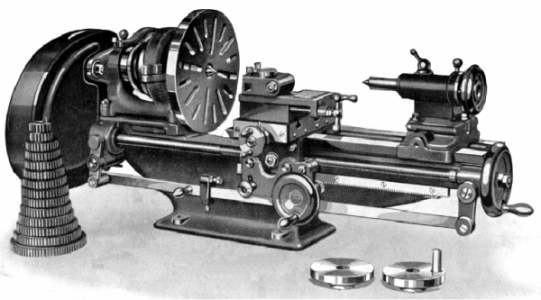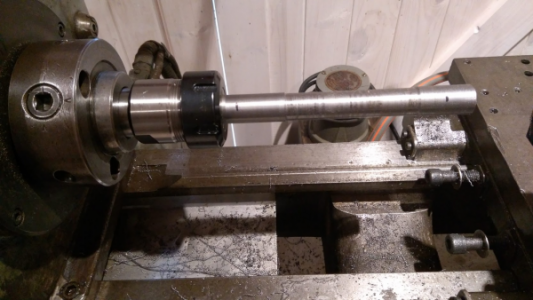- Joined
- Feb 1, 2018
- Messages
- 1,868
The other fellows have it.... the dirt gets under the saddle under the worn wipers and the bottom of the saddle gets high in the middle and rocks when you change directions like a Rocking Chair does. Unless your planning on scraping it, there is not a lot you can do. The bed ways look bad too and as you said the bed is worn near the chuck and that is why your indicator is moving plus as you stated. Is these issues causing a problem for you when your using the lathe? Many see the BIG error when using a tenths indicator and go nuts trying to figure out the problem. As Isaid, are you seeing issues when your using the lathe? If not clean, oil and put it back together.
I have twisted a end to end level/aligned bed so it will compensate for the worn spot near the chuck, so that can be done, but that will affect turning between centers and boring a hole. If you don't turn between centers or bore on the machine I can tell you how to twist the bed. It looks like your headstock is on a swivel pin? If it is you can also move the head pointing to you on the tailstock end to compensate for push away and the wear. Again as long as your not going to turn CC and bore.
If you want to learn to scrape then we can try to help you do that, but you will need to buy or borrow some tools. Rebuilding the lathe will probably cost you more then your willing to spend. Your machine is how old? 1960's? Darn near 60 years old, that's not bad for a machine that old. It like us old farts we have pain and issues after using it so long.
I have twisted a end to end level/aligned bed so it will compensate for the worn spot near the chuck, so that can be done, but that will affect turning between centers and boring a hole. If you don't turn between centers or bore on the machine I can tell you how to twist the bed. It looks like your headstock is on a swivel pin? If it is you can also move the head pointing to you on the tailstock end to compensate for push away and the wear. Again as long as your not going to turn CC and bore.
If you want to learn to scrape then we can try to help you do that, but you will need to buy or borrow some tools. Rebuilding the lathe will probably cost you more then your willing to spend. Your machine is how old? 1960's? Darn near 60 years old, that's not bad for a machine that old. It like us old farts we have pain and issues after using it so long.



